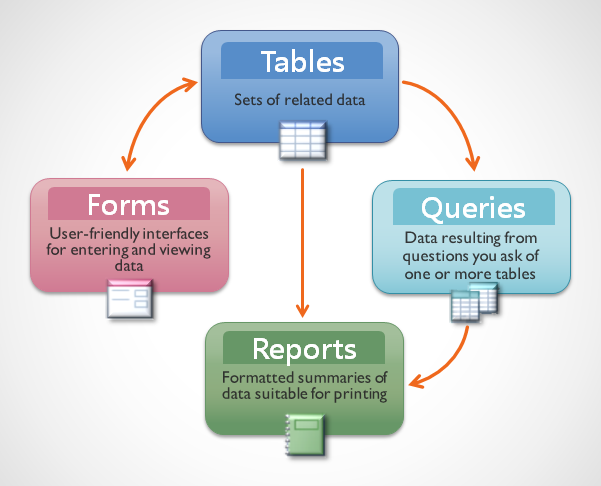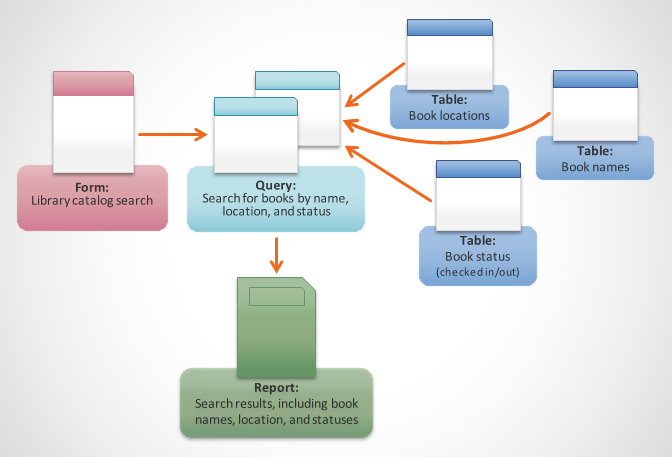Access 2013
Introduction to Objects
Putting it all together
Even if you have a good idea of how each object can be used, it can initially be difficult to understand how they all work together. It helps to remember that they all work with the same data. Every piece of data a query, form, or report uses is stored in one of your database tables.
 The four Access objects
The four Access objectsForms allow you to both add data to tables and view data that already exists. Reports present data from tables and also from queries which, in turn, search for and analyze data within those same tables.
These relationships sound complicated, but in fact they work together so well and naturally that we often don't even notice when we're using connected database objects. Have you ever used an electronic card catalog to search for a book at the library? Chances are, you entered your search in something that looks like this:
 An electronic card catalog
An electronic card catalogWhen you conducted that search, you were entering your search terms into a form that, in turn, created and ran a query based on your request. When the query finished searching the database's tables for records that matched your search, you were shown a report that drew information from the query and the related tables—in this case, a list of books matching your search terms. You could represent the connections between the objects like this:
 A search for a book. The data submitted in the form is used in a database query, which draws its data from relevant tables. The results of the query are presented in a report.
A search for a book. The data submitted in the form is used in a database query, which draws its data from relevant tables. The results of the query are presented in a report.Imagine if, instead of using these tools, you'd had to search within a giant table containing every book in the library system. The relevant records would likely be spread out across many tables: a table for book titles and descriptions, a table containing information about which books are checked in or out, and a table with each branch of the library, just to name a few.
You'd have to search at least three tables just to find a book, learn its location, and see whether it's checked in! It's easy to imagine how difficult it could become to find the right book. If you weren't careful, you might even mess something up by accidentally deleting or editing a record. It's easy to see how the database objects make this search much more manageable.
In Lesson 3, we discussed the concept of a relational database, which is a database that is able to understand how different sets of data relate to one another. Situations like the example above are exactly why people find relational databases so useful. Without a relational database, what should be a simple task—searching for a book and seeing if it's checked in and where—becomes incredibly complicated and time consuming. Knowing how to use the four Access objects can make even complicated tasks fairly user friendly.






